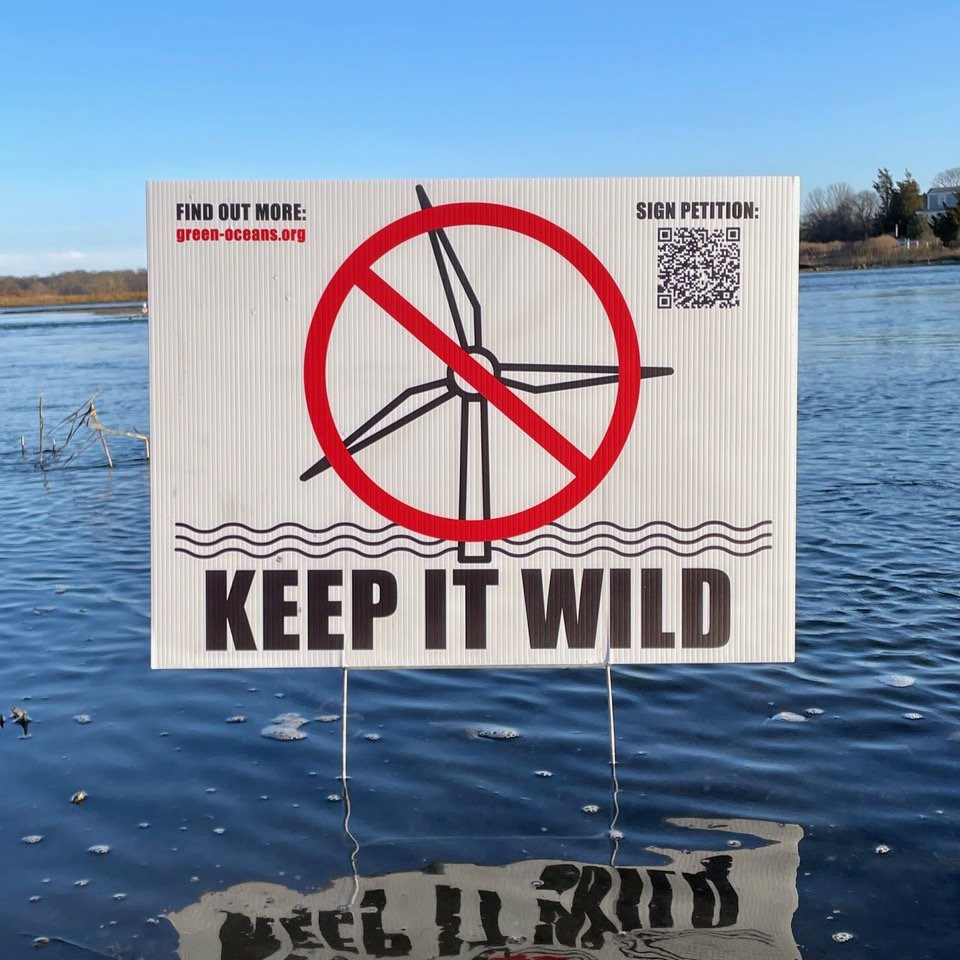Plastic Pollution
Plastic Contaminates Our Oceans
Plastic in the ocean contaminates the food supply.
From the Great plastic garbage patch in the Pacific to our own bays, plastic floats in the water, breaks up into micro-sized bits, and contaminates the food supply. A recent study demonstrated that 100% of the dolphins tested had evidence of microplastics in their breath.[1] The photo above depicts an Artic Tern riding the surf on a piece of debris from the Vineyard Wind blade failure.
Baleen whales mistakenly eat plastic. Why?
Baleen whales use their sense of smell to hunt down their prey.[1] Because their prey smells like plastic (dimethyl sulfide), baleen whales, often mistakenly consume plastic. Many marine mammals, fish, and birds consume plastic accidentally. The seafood humans eat often contains microplastics. In one study, the majority of people with heart disease had microplastics in their tissue. Those with microplastics had more frequent strokes and heart attacks.[2]
Microplastics cause multiple health problems.
Microplastics such as Polyvinyl Chloride (PVC) and Polyethylene terephthalate (PET) are potentially toxic to humans and marine life. A recent study found that PET fibers were commonly found in the tissues of marine mammals.[1] These microplastics can cause inflammation, tissue damage, fertility problems, endocrine disruption, and behavioral changes, diminishing the resiliency of marine species, including baleen whales.[2],[3]
[1] Merrill et al. Environ Pollut. 2023.
[2] Zolotova et al. PeerJ. 2022.
[3] https://marine-mammals.info/study-microplastics-found-in-2-3-marine-mammals/
Offshore Wind Projects add more plastic into the ocean
Turbine Blades contain tons of nonrecyclable plastic.
Each offshore turbine blade weighs approximately 70 tons and consists of balsa wood impregnated with epoxy glue, fiberglass, and plastic foam. The plastic contains Polyvinyl chloride (PVC), polystyrene, and Polyethylene terephthalate (PET). PVC is considered the most environmentally damaging plastic and one of the most toxic substances for inhabitants of our planet.[1] Exposure to sunlight, wind, rain, and ocean water will degrade the blades, allowing them to contaminate the marine food chain with microplastics. This process is called leading edge erosion. Constant leading-edge erosion will pollute the ocean, damage our environment, and put human health at risk.
[1] Kudzin, et al. 2024, Materials.
Blades fail frequently
Turbine blades fail at a rate of approximately 0.5% per year.[1] As the Nantucket blade failure demonstrates, neither the government nor the wind companies considered the risk of blade failure or knew how to deal with the environmental catastrophe when it occurred. Blade debris continues to litter our oceans. One of the dominant components of the blade debris is PVC and PET. PVC is considered the most environmentally damaging plastic and one of the most toxic substances for inhabitants of our planet.”
Blades also release microplastics into the ocean during their normal wear and tear.
Wind erodes the surface of the blades, especially turbines located in harsh weather conditions such as the Atlantic Ocean.[1] This erosion releases microplastics into the surrounding waters and will contaminate the marine food chain. In a recent study, every dolphin tested had evidence of plastic contamination. [2]
[1] Solberg, et al., 5th edition, 2021.
How can we all help?
Use Less
Although we all try our best to recycle, recycling often uses more energy than it saves.[1] The best way to save the ecosystem is to use less, drive less, conserve more.
[1] Bright Green Lies, by Derrick Jensen, Lierre Keith, and Max Wilbert.
Clean Up
With tides rising and falling, anything on the beach often ends up in the ocean. Once in the ocean, most plastic will become part of the food chain. Starfish can help filter microplastics out of the ocean, but industrializing the ocean threatens the entire ecosystem, including the survival of starfish.
Oppose Offshore Wind
Offshore wind contaminates our oceans and disrupts the ecosystem, without providing any benefit to climate change. Join our efforts to save the oceans from industrialization.









